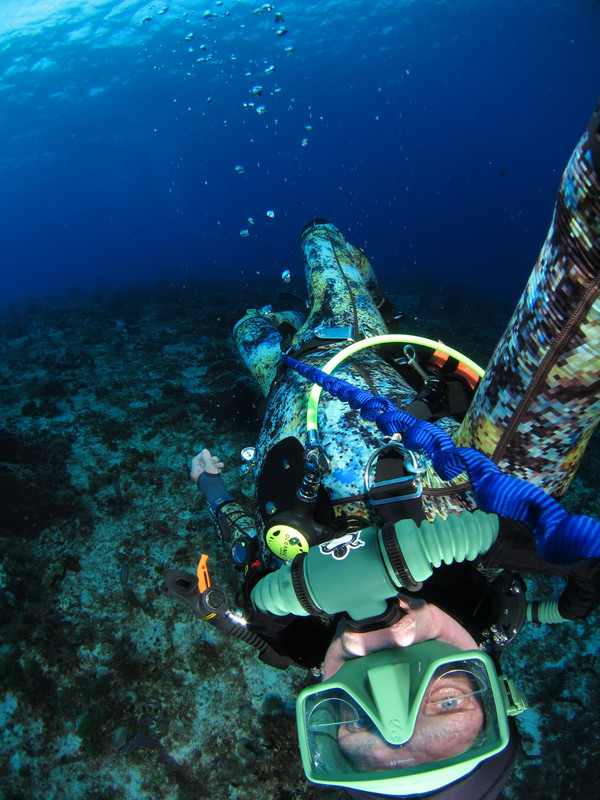Terry,I think we have reached an irreconcilable impasse regarding opinion of the horse collar BC.
I think the Clackamas River looks like a really fun dive and as long as it is warm enough that I would not need to bulk up with neoprene I would enjoy (not having to) use of my horse collar SeaTec. Let's explore that Clackamas River, you are shallow so there is little or no suit compression, it appears to be fairly warm water so you do not use a lot of suit, there is no long surface swim involved to get to the dive site, there is no loitering on the surface awaiting pick up, there is no boat traffic that might suggest enough air in the BC to get the head up to swivel. That is why extrapolating one set of experiences to another's is not often useful.
I prefer, generally, nothing up front, a clean office and this free dive wetsuit is super flexible and unconstricting (my wife got me two (!) of them on Amazon $56 and $75, each deal of the day!). It is like diving naked but warmer. And you cannot see me, how cool is that
The Dacor my new wife is using was one of my favorite horse collars. It has the lift BC bladder under the tummy and it had a large neck opening, a huge pocket and no air was ever introduced into the upper bladder unless you were wanting a life jacket instead of a BC. Alas, it finally succumbed to age and fell apart. I gave it an honorable burial at sea, RIP my Dacor horse collar BC friend. You were good in your day and I loved using you.
The Clackamas River can be fun, but last Monday (Memorial Day) wasn’t; the water was high, and the current swift. My dive site starts above High Rocks, and goes down through the High Rocks area to another smaller park. But the initial entry has a current hitting the rocks and traveling upstream, then circling back to run at 90 degrees to the rapids it flows into (behind a small island). That island was almost submerged, and when I hit that rapids area, i was turned every way by loose for three round trips in the opposite circular current. Water temperature, by the way, was 56 degrees F, and I wore a full wetsuit, hood, booties (band new booties) and gloves. As I was being tossed around, my float’s line tangled with my GoPro on my helmet, and in the process flooded my mask. When I finally got out of the current and downstream, I had to surface and use my Para-Sea BCD to be inflated fully in order to untangle myself, get my helmet off, untangle it, and clear my mask (a Scubapro 3-window that I really like). I was very thankful that I had the Para-Sea BC on for that dive (my first this year). It performed very well indeed, for a prototype that is 40+ years old.
Now, I’d have to agree with you about the Scubapro Stabilizing Jacket, but there is also a back story to it. You see, Bill Herder of Deep Sea Bill’s in Newport, Oregon not only built a BCD into the back of his custom wetsuits, but he also built a neoprene inflatable vest. I demonstrated that neoprene vest at IQ7 (The Seventh International Conference on Underwater Education) held in California (I’ll have to look up where it was held). I was a speaker, and talked about buoyancy compensation. I also conducted a demonstration of some of my concepts, and also Bill Herder’s vest, in the pool at the hotel. It was about a year or two later that Scubapro came out with their Stabilizing Jacket, and Bill was mad. He maintained until his death that Scubapro had stolen his idea, and commercialized it. The jacket idea was Bill’s. And he never received any recognition or reward for it.
SeaRat





